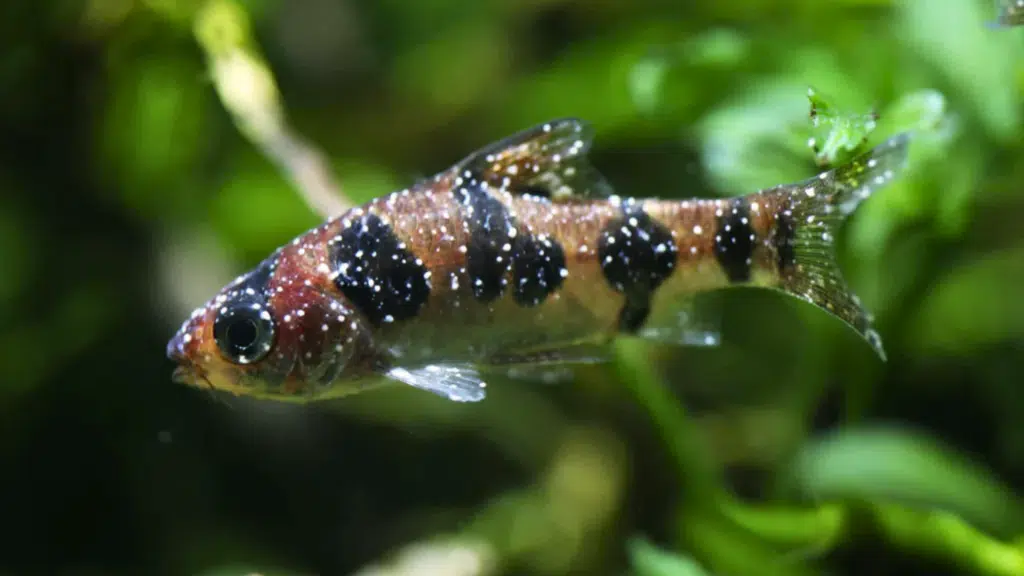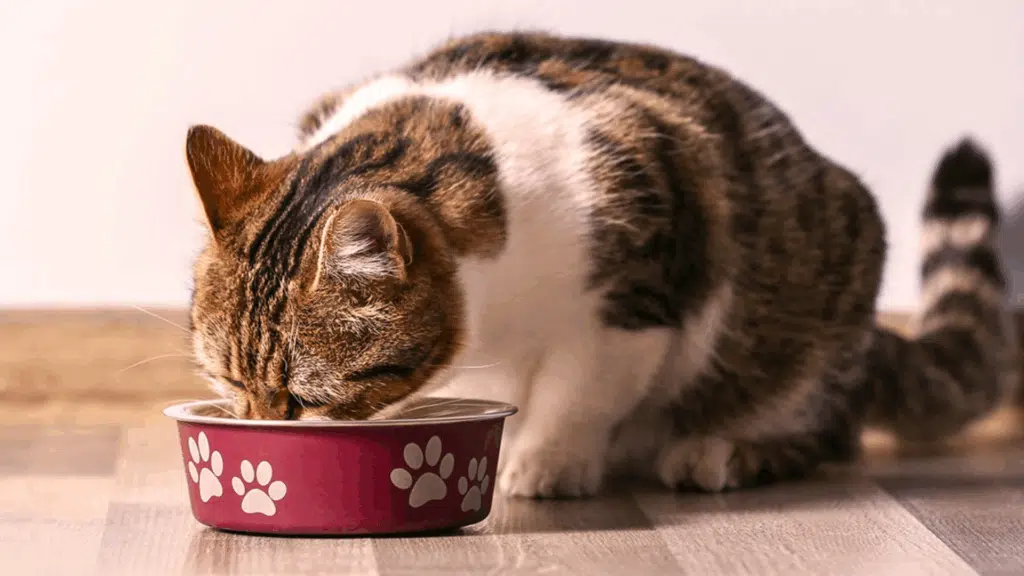How to treat white spot disease in fish at home is one of the first things every fish owner should learn.
Ich is a common parasite that shows up as tiny white dots on your fish’s fins or body. It spreads fast and can make your fish weak, stressed, or even sick if left untreated.
In this guide, I’ll walk you through:
- What causes Ich and how to spot it early
- Simple home treatments that really work
- Easy ways to stop it from coming back
I’ve dealt with this issue before, and I know how worrying it can be to see your fish covered in spots.
The good news? You can treat Ich safely at home with the right steps. Let’s start by understanding what’s really going on in your tank.
What Is White Spot Disease in Fish?
White spot disease, or Ich, is aparasitic infection caused by a tiny organism called Ichthyophthirius multifiliis.
I’ve seen it many times, and it usually looks like small white grains scattered over a fish’s fins, gills, and body, almost like salt.
These spots are the parasite’s protective cysts, which make the fish itch and rub against objects. When this happens, your fish may become tired, lose appetite, or breathe harder than usual.
Ich spreads quickly, especially in tanks with poor water quality or sudden temperature changes.
It doesn’t just affect one fish; it can take over the whole aquarium fast. The good news is that once you recognize the signs, you can start treatment right away.
Acting early helps your fish recover faster and keeps the rest of your tank healthy.
How to Treat White Dots in Fish?

I’ve treated Ich at home many times, and while it takes patience, it’s completely manageable with the right approach. The goal is to stop the parasite’s life cycle and help your fish recover comfortably.
1. Raising the Water Temperature Gradually
Ich can’t survive long in warmer water. I start by raising the temperature slowly, just 1–2°F every few hours, until it reaches 82–86°F.
This speeds up the parasite’s life cycle, helping treatments work faster.
I also keep an air stone running since warm water holds less oxygen. I maintain this heat for at least a week, then lower it gradually once my fish look healthy again.
Consistency is key; don’t rush the process or make sudden drops in temperature.
2. Adding Aquarium Salt
Aquarium salt helps fish fight off parasites and reduces stress. I mix one tablespoon per five gallons of water, dissolving it first before adding it to the tank.
This protects the fish’s slime coat and makes the water less comfortable for Ich.
Sensitive fish like catfish or tetras need less salt, so I start with half the dose if I’m unsure. I re-add salt only after water changes, keeping the balance steady.
With regular monitoring, I notice calmer, more active fish within days.
3. Using Safe Ich Medications
Sometimes, salt and heat aren’t enough. In that case, I turn to Ich-safe medications like malachite green or formalin-based treatments.
I always remove carbon filters first so they don’t absorb the medicine. Following the label exactly is important, too much can harm your fish, and too little won’t work.
I continue treatment for the full recommended time, even if the fish look better early on.
This ensures all parasite stages are destroyed. Afterward, I replace the carbon filter and do a partial water change to clear leftover medication.
4. Cleaning and Vacuuming the Tank Regularly
Ich parasites hide in gravel and decor, waiting for a chance to return. I always vacuum the substrate and clean the tank every few days during treatment.
Replacing about 25% of the water removes free-floating parasites and waste.
I also rinse filters gently in old tank water to preserve good bacteria. Decorations and rocks get a quick wipe with tank-safe tools.
Keeping the tank clean shortens recovery time and prevents re-infection. I’ve seen tanks recover completely in about 10–14 days with consistent care and monitoring.
How to Diagnose a White Spot in Fish?
When I see white dots that look like tiny salt grains on a fish’s fins or body, I know it’s likely Ich. These spots often start small but can spread quickly across the tank if not treated.
Infected fish may rub against rocks, plants, or decorations to relieve the itch caused by the parasites.
I also watch for clamped fins, loss of color, and slow or labored breathing, which often means the gills are affected.
Some fish may stop eating or stay near the bottom of the tank. Since Ich moves fast from one fish to another, early action is key.
If I notice even one fish showing these signs, I begin treatment right away to keep the rest of the aquarium safe and healthy.
What Causes White Spots on Fish?
White spots on fish often show up when their immune system weakens, giving the Ich parasite a chance to attack. I’ve found this can happen for many reasons, some easy to fix and others less obvious.
1. Sudden Temperature Changes
Sudden temperature changes are one of the main reasons fish get Ich. When the water cools or heats too fast, it shocks their system.
I’ve noticed this often happens after water changes when the new water isn’t the same temperature as the tank.
The stress from this sudden change weakens their natural defenses, giving parasites the upper hand. I always use a thermometer to match the new water to the tank’s temperature.
It’s a small step that makes a big difference. Consistent warmth helps your fish stay healthy and keeps Ich away.
2. Poor Water Quality
I can’t stress enough how important clean water is for your fish. When ammonia, nitrite, or nitrate levels rise, fish become weak and prone to white spot disease.
Dirty tanks, leftover food, or clogged filters make things worse.
I’ve found that regular maintenance, like weekly partial water changes and vacuuming debris, keeps the environment stable. Testing your water weekly helps catch problems early.
A clean tank keeps fish calm, breathing well, and able to fight infections naturally. Good water quality is the first line of defense against Ich.
3. Overcrowding in the Tank
Too many fish in one tank can quickly lead to trouble. Overcrowding lowers oxygen levels and increases waste, both of which stress your fish. I once made this mistake and saw how fast Ich spread.
With too little space, fish bump into each other and have nowhere to hide, raising their anxiety levels.
The result? Weakened immunity and fast parasite growth. To prevent this, I keep my tank lightly stocked and give every fish enough room to move.
A calm, spacious environment helps fish stay relaxed and resistant to white spots.
4. Stress and Weak Immunity
Stress plays a huge role in white spot disease. I’ve noticed fish get sick more often when they face constant stress from poor diet, aggressive tankmates, or loud environments.
Even small changes, like shifting decor or sudden lighting, can affect them.
When fish are calm and well-fed, their immune system stays strong, making it harder for parasites to latch on. I feed high-quality food, avoid sudden changes, and keep a routine.
You’ll see how much healthier your fish act when they feel safe and secure in their tank.
How to Stop White Spots from Coming Back?
Once your fish recover from Ich, keeping the tank clean and stable is the best way to prevent it from returning. I’ve learned that small, consistent habits make a big difference in long-term fish health.
- Keep Water Conditions Stable: Test water temperature and pH regularly. Avoid sudden changes since even small shifts can stress fish and make them vulnerable to Ich again.
- Avoid Overfeeding: Give only what your fish can finish in a few minutes. Leftover food breaks down into waste, raising ammonia levels and lowering water quality.
- Do Regular Tank Maintenance: Change about 20–25% of the water each week. Clean filters and vacuum gravel to remove debris and hidden parasites.
- Watch New Additions: Quarantine any new fish or plants for at least two weeks before adding them to the main tank to prevent new infections.
- Reduce Stress Factors: Keep noise low, lighting soft, and tankmates compatible. Calm, healthy fish fight off diseases much better.
Can White Spots on Fish Be Something Other than Ich?
Yes, white spots on fish can sometimes be caused by other issues, not just Ich. I’ve seen cases where fungal infections leave fuzzy white patches instead of the smooth, grain-like dots from Ich.
Velvet disease can also look similar, but it gives the fish a fine, dusty coating with a gold or gray tint.
In some cases, bacterial infections or injuries from rough objects cause pale marks that might look like spots at first.
The main difference is that Ich spots are evenly sized and spread quickly over the fins and body, while other problems appear in irregular shapes or fuzzy textures.
Watching your fish’s behavior, like scratching or labored breathing, can help you tell the difference and choose the right treatment.
Tips for Quarantining New Fish
Quarantining new fish is one of the easiest ways to keep your tank safe from Ich and other diseases. I always treat this step as essential, not optional; it saves time, stress, and your fish’s health in the long run.
- Set Up a Separate Tank: Use a small 10–20-gallon tank with its own filter, heater, and air stone. Keep it away from your main tank.
- Observe for 2–4 Weeks: Watch the new fish for any signs of white spots, fungus, or odd behavior before moving them.
- Maintain Clean Water: Do partial water changes every few days to keep ammonia and nitrite levels low.
- Avoid Sharing Equipment: Use separate nets, siphons, and cleaning tools to stop cross-contamination.
- Add to the Main Tank Slowly: After quarantine, move the fish carefully and monitor them for a few days in their new environment.
When to Seek Help from a Fish Expert?

Sometimes, even with the best care, Ich or other fish problems don’t go away. I reach out to a fish expert or vet when I see no improvement after a full treatment cycle or if the spots keep coming back.
If fish stop eating, breathe heavily, or act weak despite clean water and medication, that’s another sign to get help.
Experts can identify if it’s really Ich or a different disease like velvet or fungus. They might also test the water or suggest safe, stronger treatments.
I’ve found that professional advice saves time and prevents bigger losses.
It’s better to ask early than risk losing your fish. Getting help also teaches you how to spot issues sooner next time, keeping your tank healthy and balanced in the long run.
Conclusion
Keeping your fish healthy starts with quick diagnosis and steady care. I’ve learned that spotting Ich early makes all the difference; it gives you time to act before it spreads.
Simple steps like maintaining clean water, feeding properly, and watching for small changes in behavior go a long way.
Consistent care keeps your tank balanced and your fish strong enough to fight off parasites naturally.
Preventive habits, such as quarantining new fish and avoiding sudden water changes, help stop Ich from coming back.
When your fish live in a calm, stable environment, they’re less likely to face stress or disease.
With attention and routine, you can enjoy a healthy, lively tank free from white spots and other common issues.








